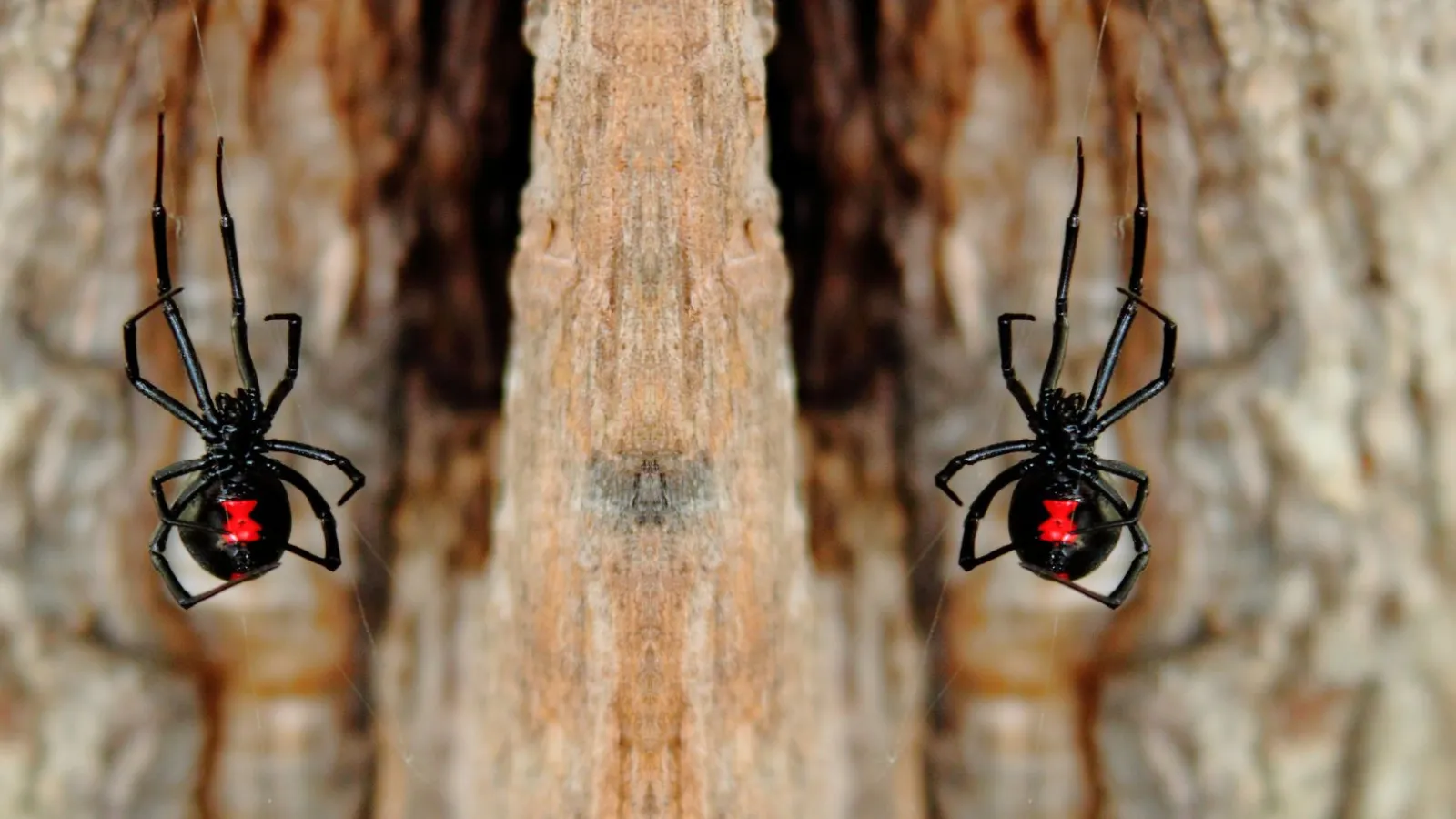
Black & Brown Widow Spiders
Latin Name: Latrodectus mactans
Brown and black widow spiders are commonly found in warm, temperate regions, including Poquoson, VA, where the climate and environment provide ideal conditions for their survival. Here's an overview of each species and what you should know about them:
Black Widow Spiders (Latrodectus mactans)
- Appearance: Black widow spiders are shiny black with a distinctive red or orange hourglass marking on the underside of their abdomen. They have long, slender legs and a bulbous abdomen.
- Habitat: They prefer dark, sheltered locations such as woodpiles, garages, sheds, basements, and crawl spaces. Outdoors, they can be found under rocks, in hollow tree stumps, or among debris.
- Behavior: Black widows are not aggressive and will bite only if disturbed or threatened. They are nocturnal hunters and primarily feed on insects, which they trap in their irregularly shaped webs.
- Bites: Their venom is potent and can cause significant discomfort, including muscle cramps, nausea, and localized pain. While bites are rarely fatal, they may require medical attention, especially for children, the elderly, or those with weakened immune systems.
Brown Widow Spiders (Latrodectus geometricus)
- Appearance: Brown widows are lighter in color than black widows, ranging from tan to light brown with dark brown or black markings. They also have an hourglass marking, usually orange or yellow, on the underside of their abdomen.
- Habitat: Brown widows are less reclusive than black widows and are often found around homes, particularly in outdoor furniture, mailboxes, flowerpots, and fences. They prefer man-made structures.
- Behavior: Like black widows, brown widows are shy and non-aggressive. Their venom is less potent than that of black widows, making their bites less severe. However, bites can still cause redness, swelling, and mild discomfort.
- Egg Sacs: One distinguishing feature of brown widows is their spiky egg sacs, which look like tiny burrs or sandspurs.
Prevention and Management
- Eliminate hiding spots: Keep outdoor areas free of clutter, such as woodpiles, debris, and overgrown vegetation.
- Seal entry points: Repair cracks and gaps around doors, windows, and foundations to prevent spiders from entering your home.
- Regular cleaning: Dust and vacuum regularly, especially in dark corners, under furniture, and in basements or attics.
- Professional pest control: If widows are a concern around your property, contacting a pest control professional can help identify and manage infestations safely.
Both species play an important role in controlling insect populations but should be handled with caution due to the potential risks of their bites.
Similar Pests: Common Spiders
